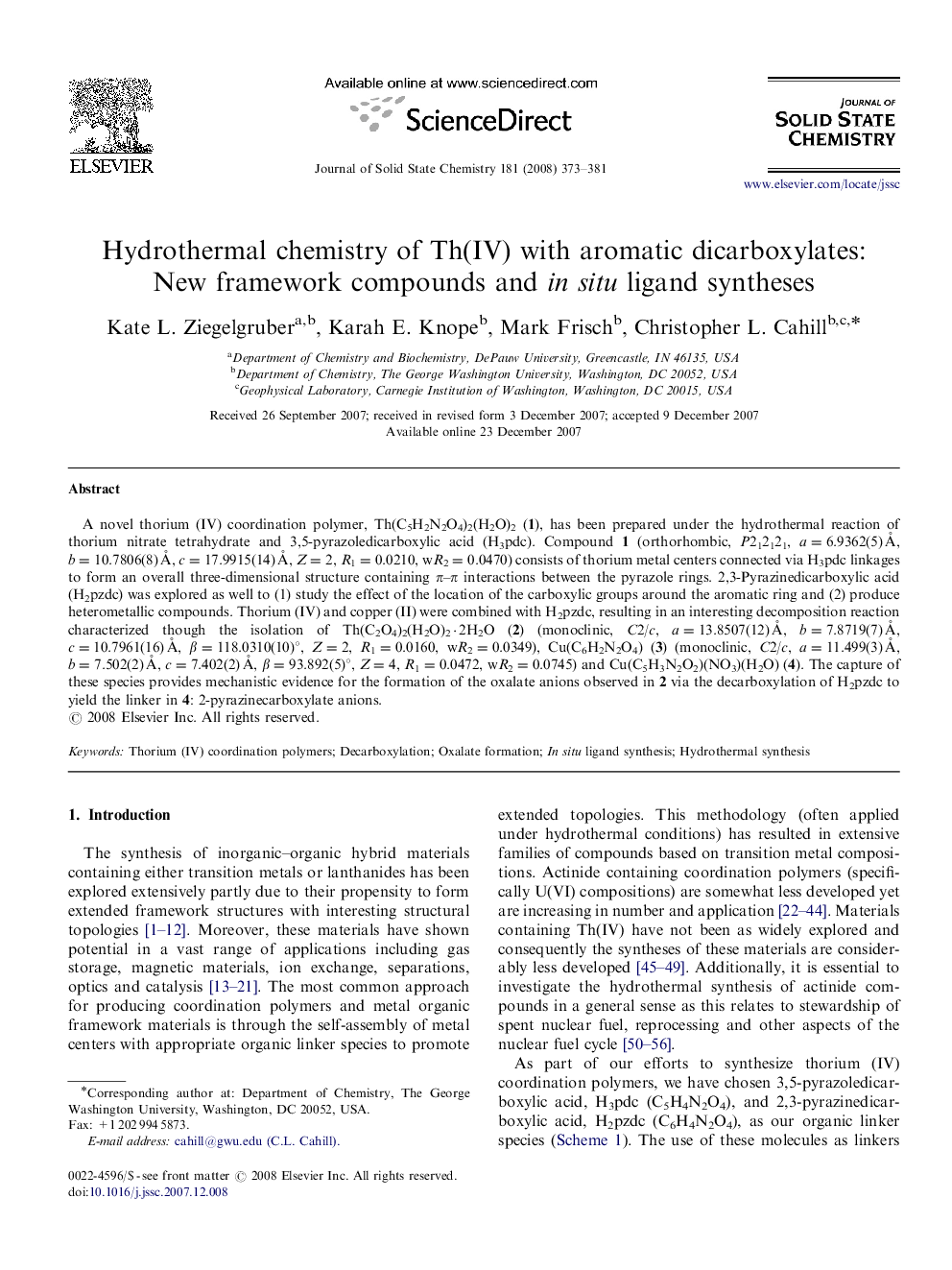| Article ID | Journal | Published Year | Pages | File Type |
|---|---|---|---|---|
| 1333766 | Journal of Solid State Chemistry | 2008 | 9 Pages |
A novel thorium (IV) coordination polymer, Th(C5H2N2O4)2(H2O)2 (1), has been prepared under the hydrothermal reaction of thorium nitrate tetrahydrate and 3,5-pyrazoledicarboxylic acid (H3pdc). Compound 1 (orthorhombic, P212121, a=6.9362(5) Å, b=10.7806(8) Å, c=17.9915(14) Å, Z=2, R1=0.0210, wR2=0.0470) consists of thorium metal centers connected via H3pdc linkages to form an overall three-dimensional structure containing π–π interactions between the pyrazole rings. 2,3-Pyrazinedicarboxylic acid (H2pzdc) was explored as well to (1) study the effect of the location of the carboxylic groups around the aromatic ring and (2) produce heterometallic compounds. Thorium (IV) and copper (II) were combined with H2pzdc, resulting in an interesting decomposition reaction characterized though the isolation of Th(C2O4)2(H2O)2·2H2O (2) (monoclinic, C2/c, a=13.8507(12) Å, b=7.8719(7) Å, c=10.7961(16) Å, β=118.0310(10)°, Z=2, R1=0.0160, wR2=0.0349), Cu(C6H2N2O4) (3) (monoclinic, C2/c, a=11.499(3) Å, b=7.502(2) Å, c=7.402(2) Å, β=93.892(5)°, Z=4, R1=0.0472, wR2=0.0745) and Cu(C5H3N2O2)(NO3)(H2O) (4). The capture of these species provides mechanistic evidence for the formation of the oxalate anions observed in 2 via the decarboxylation of H2pzdc to yield the linker in 4: 2-pyrazinecarboxylate anions.
Graphical abstract3,5-Pyrazoledicarboxylic and 2,3-pyridinedicarboxylic acid were utilized in synthesizing two novel thorium (IV) coordination polymers. Attempts to synthesize a Th–Cu bimetallic compound with 2,3-pyridinedicarboxylic acid resulted in a triphasic mixture (2, 3 and 4, respectively). The oxalate anion observed in Th(C2O4)2(H2O)2·2H2O (2) is theorized to result from decarboxylation of 2,3-pyridinedicarboxylic acid as supported by the organic linker, 2-pyrazinecarboxylate, observed in Cu(C5H3N2O2)(NO3)(H2O) (4).Figure optionsDownload full-size imageDownload as PowerPoint slide
